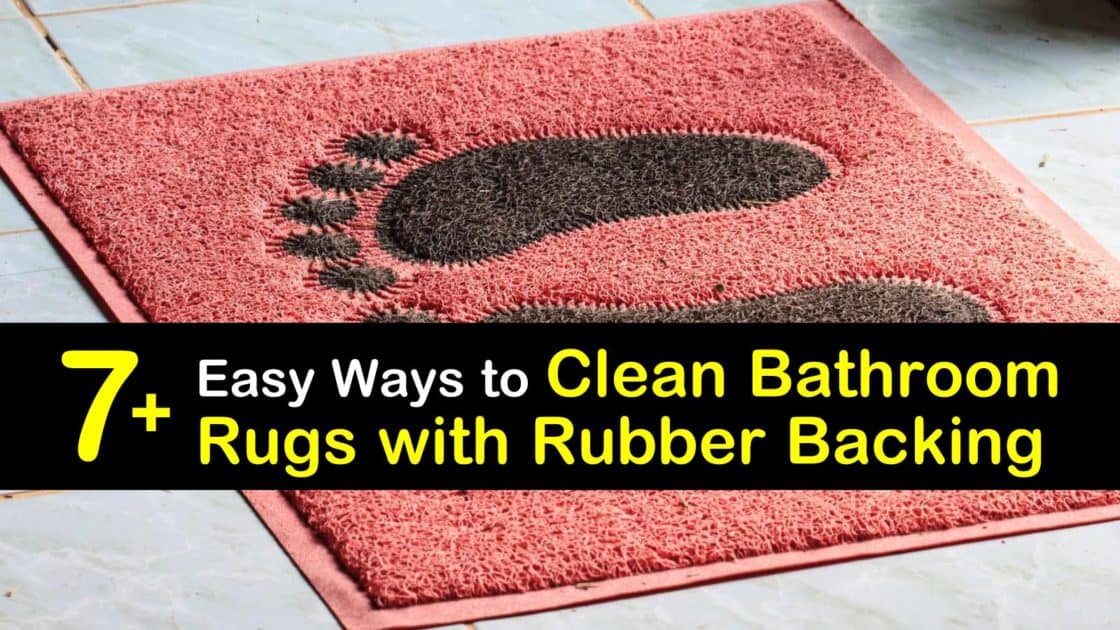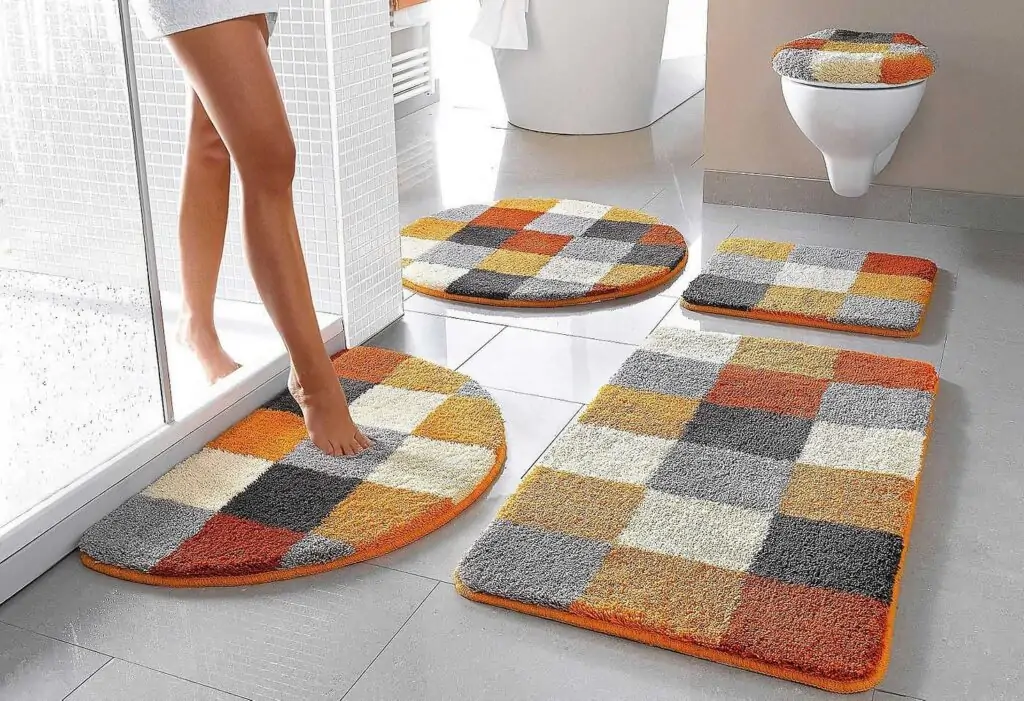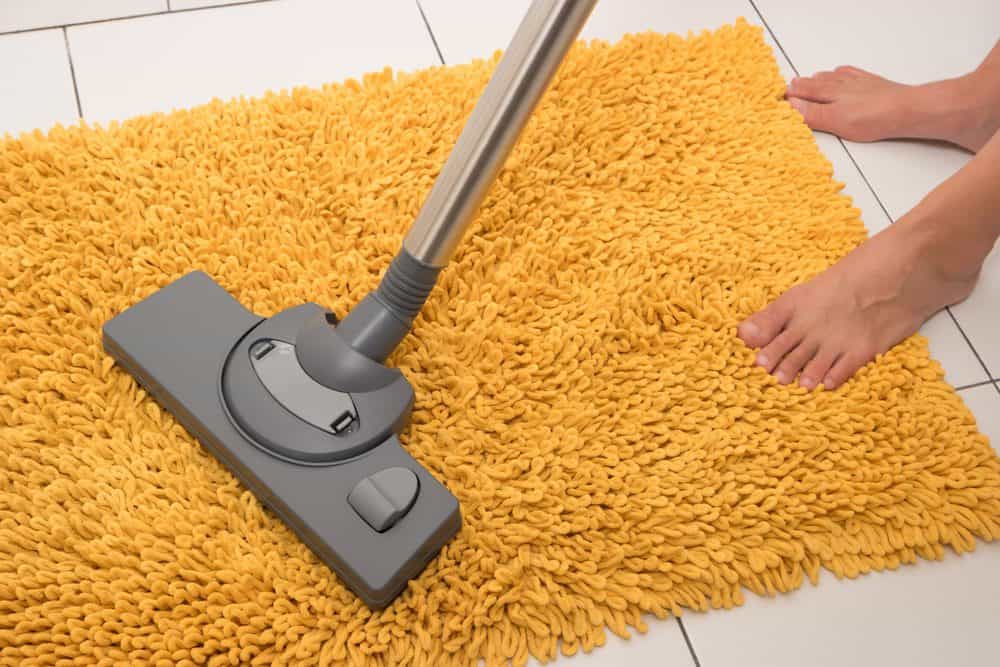Understanding Bathroom Rug Materials

Knowing the material of your bathroom rug is crucial for effective cleaning and maintaining its longevity. Different materials have unique properties and require specific cleaning methods. Let’s dive into the world of bathroom rug materials and discover the best practices for keeping them clean and fresh.
Identifying Bathroom Rug Materials
Identifying the material of your bathroom rug can be done through a combination of visual inspection, touch, and label reading.
- Visual Inspection: Observe the texture, weave, and color of the rug. Natural fibers like cotton and wool often have a more textured appearance, while synthetic fibers like nylon and polyester tend to be smoother.
- Touch: Feel the rug’s texture. Natural fibers are typically softer and more absorbent, while synthetic fibers are generally smoother and less absorbent.
- Label: Check the care label attached to the rug. It usually provides information about the material composition and recommended cleaning methods.
Common Bathroom Rug Materials
Here are some of the most common materials used for bathroom rugs, along with their pros and cons:
- Cotton:
- Pros: Soft, absorbent, affordable, and easy to find.
- Cons: Prone to shrinking, fading, and mildew growth if not properly dried.
- Wool:
- Pros: Durable, naturally water-resistant, and soft.
- Cons: Can be expensive, requires specialized cleaning, and may shed.
- Polyester:
- Pros: Durable, stain-resistant, and easy to care for.
- Cons: Can feel synthetic, may not be as absorbent as natural fibers.
- Nylon:
- Pros: Durable, quick-drying, and resistant to fading and shrinking.
- Cons: Can feel stiff, may not be as absorbent as natural fibers.
- Bamboo:
- Pros: Naturally antibacterial, soft, and absorbent.
- Cons: Can be more expensive, requires gentle cleaning, and may be prone to shedding.
- Microfiber:
- Pros: Highly absorbent, soft, and quick-drying.
- Cons: Can be more expensive, requires gentle cleaning, and may not be as durable as other materials.
Cleaning Methods for Different Bathroom Rug Materials
The cleaning method for your bathroom rug depends on its material. Here are some general guidelines:
- Cotton and Polyester Rugs: These rugs can be machine-washed in cold water on a gentle cycle. Air-dry them or tumble dry on low heat.
- Wool Rugs: Wool rugs are delicate and require special care. Hand-wash them in cool water with a mild detergent. Do not wring or twist the rug. Air-dry it flat on a clean surface.
- Silk Rugs: Silk rugs are extremely delicate and should be professionally cleaned.
- Bamboo Rugs: Bamboo rugs can be vacuumed regularly and spot-cleaned with a damp cloth. Do not soak them in water.
- Microfiber Rugs: Microfiber rugs can be machine-washed in cold water on a gentle cycle. Air-dry them or tumble dry on low heat.
Daily Cleaning and Maintenance

Keeping your bathroom rug clean is essential for maintaining a hygienic and pleasant bathroom environment. Daily cleaning helps remove dirt, dust, and hair, preventing the buildup of stains and odors. A simple routine can make a big difference in keeping your bathroom rug looking and smelling fresh.
Removing Everyday Dirt, Dust, and Hair, How to clean bathroom rugs
Regularly removing everyday dirt, dust, and hair is crucial for maintaining a clean and hygienic bathroom rug. This simple routine helps prevent the accumulation of grime and odors.
- Shake or Vacuum: Start by shaking the rug outdoors or vacuuming it with a brush attachment. This removes loose dirt, dust, and hair. Be sure to vacuum both sides of the rug for a thorough cleaning.
- Spot Clean: For stubborn stains or spills, use a damp cloth or sponge with a mild detergent solution. Gently dab the stain, working from the outside inwards to prevent spreading. Avoid rubbing the stain, as this can damage the rug fibers.
Preventing Stains and Odors
A quick routine can effectively prevent stains and odors from accumulating on your bathroom rug. This helps keep your bathroom rug looking and smelling fresh, even with daily use.
- Air Out: After each use, hang the rug outdoors or in a well-ventilated area to air out. This helps remove moisture and prevents the growth of bacteria and mildew, which can cause unpleasant odors.
- Rotate Regularly: Rotate the rug periodically to ensure even wear and prevent the buildup of dirt and stains in specific areas. This helps prolong the life of the rug and maintain its appearance.
- Use a Rug Pad: A rug pad can help absorb moisture and prevent the rug from slipping, reducing the risk of stains and odors. It also provides cushioning for your feet.
Deep Cleaning and Stain Removal: How To Clean Bathroom Rugs

Giving your bathroom rugs a deep clean can help remove accumulated dirt, grime, and stubborn stains, restoring their freshness and extending their lifespan. This process typically involves using a cleaning solution and a washing machine, but it’s essential to understand the specific needs of your rug material.
Cleaning Agents and Their Uses
Choosing the right cleaning agent is crucial for effective deep cleaning and stain removal. Here are some common options and their applications:
- Laundry Detergent: A mild laundry detergent is generally suitable for most bathroom rugs, especially those made of cotton or microfiber. It effectively removes dirt and grime without harsh chemicals.
- Baking Soda: This natural cleaning agent is a powerful deodorizer and stain remover. It’s particularly effective for removing odors and stains from urine.
- White Vinegar: White vinegar acts as a natural disinfectant and can help remove hard water stains. It can also be used to brighten colors and remove mildew.
- Oxygen Bleach: Oxygen bleach is a safer alternative to chlorine bleach, especially for colored rugs. It effectively removes stains without damaging the fibers.
Stain Removal Techniques
Different stains require different approaches for effective removal. Here’s a table outlining common stain types and their corresponding removal techniques:
| Stain Type | Removal Technique |
|---|---|
| Coffee | Blot the stain with a clean cloth or sponge. Mix a solution of equal parts water and white vinegar and apply it to the stain. Let it sit for a few minutes, then blot again. Repeat if necessary. |
| Urine | Blot the stain with a clean cloth or sponge. Sprinkle baking soda generously over the stain. Let it sit for at least 30 minutes, then vacuum it up. |
| Makeup | Use a clean cloth or sponge to blot the stain with a solution of mild dish soap and water. Rinse thoroughly with water and blot dry. |
| Blood | Use a cold water and salt solution to blot the stain. Rinse thoroughly with cold water and blot dry. |
Safety Precautions
While deep cleaning bathroom rugs can be beneficial, it’s important to prioritize safety:
- Always check the care label: Before using any cleaning agent, consult the care label on your rug to ensure it’s safe for the material.
- Test cleaning agents in an inconspicuous area: Before applying any cleaning agent to the entire rug, test it in an inconspicuous area to ensure it doesn’t cause discoloration or damage.
- Avoid harsh chemicals: Avoid using harsh chemicals like chlorine bleach, especially on colored rugs, as they can damage the fibers.
- Use proper ventilation: When using cleaning agents, ensure adequate ventilation to prevent fumes from accumulating.
- Wear gloves: Wear gloves to protect your hands from the cleaning agents.
How to clean bathroom rugs – Keeping your bathroom rugs clean is essential for maintaining a hygienic and visually appealing space. Regular washing is key, but don’t forget to consider the overall aesthetic! You can enhance your bathroom’s charm by selecting coordinating bathroom rugs and towels, as discussed in this article on bathroom rugs and towels to match.
Once you’ve chosen your perfect set, ensure your rugs stay fresh and inviting with regular cleaning, using a mild detergent and a gentle washing cycle.
Keeping your bathroom rugs clean is essential for a hygienic and welcoming space. Regularly washing them and ensuring they dry thoroughly can prevent mold and mildew growth. If you’re noticing a wobbly towel bar, though, it’s a good idea to fix bathroom towel bar for safety and aesthetic reasons.
Once you’ve tackled that, you can get back to focusing on the rugs and ensure your bathroom is a relaxing and fresh haven.